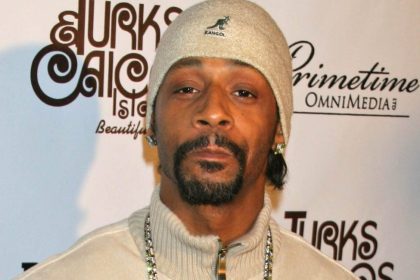Smoking is a harmful habit that affects not only the smoker but also those around them, particularly children. The impact of secondhand smoke on children’s health is profound, with the lungs being one of the most vulnerable organs. Children’s respiratory systems are still developing, making them more susceptible to the harmful effects of tobacco smoke. Understanding how smoking damages your child’s lungs is crucial for parents and caregivers to make informed decisions to protect their children’s health.
The adverse effects of smoking on children’s respiratory health are well-documented yet often underestimated. Exposure to secondhand smoke can lead to a myriad of health issues, ranging from acute respiratory infections to long-term chronic conditions. This article delves into the various ways smoking can harm your child’s lungs, the mechanisms behind these damages, and the importance of creating a smoke-free environment for your child’s well-being.
Understanding Secondhand Smoke
What is Secondhand Smoke?
Secondhand smoke, also known as environmental tobacco smoke (ETS), is a combination of the smoke exhaled by smokers and the smoke emitted from the burning end of a cigarette, cigar, or pipe. This smoke contains more than 7,000 chemicals, hundreds of which are toxic, and about 70 can cause cancer. When children breathe in secondhand smoke, they are exposed to these harmful chemicals, which can have immediate and long-term health effects.
Components of Secondhand Smoke
The toxic components of secondhand smoke include nicotine, tar, carbon monoxide, formaldehyde, benzene, and ammonia. These substances can irritate and damage the delicate tissues of the respiratory system, leading to inflammation and impaired lung function. The effects are even more pronounced in children due to their smaller airways and higher respiratory rates.
Immediate Effects on Children’s Lungs
Respiratory Infections
Children exposed to secondhand smoke are at a higher risk of developing respiratory infections such as bronchitis and pneumonia. The smoke irritates the lining of the airways, making them more susceptible to infections. Studies have shown that children exposed to tobacco smoke have a higher incidence of respiratory infections, leading to more frequent doctor visits and hospitalizations.
Asthma and Wheezing
Asthma is a chronic condition characterized by inflammation and narrowing of the airways, causing difficulty in breathing. Exposure to secondhand smoke can trigger asthma attacks and worsen existing asthma symptoms in children. Even children who do not have asthma may experience wheezing and shortness of breath when exposed to tobacco smoke.
Long-Term Effects on Lung Development
Impaired Lung Growth
The lungs continue to develop throughout childhood and adolescence. Exposure to secondhand smoke can interfere with this growth, leading to reduced lung function and capacity. Children exposed to tobacco smoke may have smaller lung volumes and are at an increased risk of developing chronic obstructive pulmonary disease (COPD) later in life.
Increased Risk of Lung Cancer
Although lung cancer typically develops later in life, the damage caused by exposure to secondhand smoke during childhood can increase the risk of developing lung cancer as an adult. The carcinogens in tobacco smoke can cause mutations in the DNA of lung cells, setting the stage for cancer development many years later.
Mechanisms of Damage
Inflammation and Oxidative Stress
Tobacco smoke triggers an inflammatory response in the respiratory system. The body’s immune cells respond to harmful chemicals, leading to inflammation of the airways. Over time, chronic inflammation can damage lung tissues and impair their function. Additionally, the oxidative stress caused by tobacco smoke can lead to cell damage and apoptosis (cell death).
Disruption of Ciliary Function
The respiratory system is lined with tiny hair-like structures called cilia, which help to clear mucus and debris from the airways. Tobacco smoke can paralyze and damage these cilia, reducing their ability to keep the airways clean. This can lead to an accumulation of mucus, making the lungs more susceptible to infections and further damage.
Importance of a Smoke-Free Environment
Protecting Indoor Air Quality
One of the most effective ways to protect your child’s lungs is by maintaining a smoke-free environment. This includes banning smoking inside the home and car, as even occasional smoking indoors can significantly increase the levels of harmful pollutants. Ensuring your child spends time in smoke-free environments, such as schools and daycare centers, is also crucial.
Educating Family and Friends
Educating family members and friends about the dangers of secondhand smoke and the importance of keeping your child’s environment smoke-free is essential. Encourage smokers to quit or, at the very least, to smoke outside and away from children. Providing information and resources on smoking cessation can help support loved ones in their efforts to quit.
Conclusion: The Impact of Smoking on Your Child’s Lung Health
The evidence is clear: smoking poses a significant threat to your child’s lung health. From immediate effects like respiratory infections and asthma to long-term consequences such as impaired lung growth and increased cancer risk, the damage caused by secondhand smoke is profound and far-reaching. By understanding how smoking damages your child’s lungs, you can take proactive steps to protect their health and create a safer, healthier environment.
Creating a smoke-free home and educating those around you about the risks of secondhand smoke are essential steps in safeguarding your child’s respiratory health. Remember, your choices today can impact your child’s well-being and quality of life. Taking action now can help ensure that your child grows up with healthy, strong lungs, free from the harmful effects of tobacco smoke.
This story was created using AI technology.
















